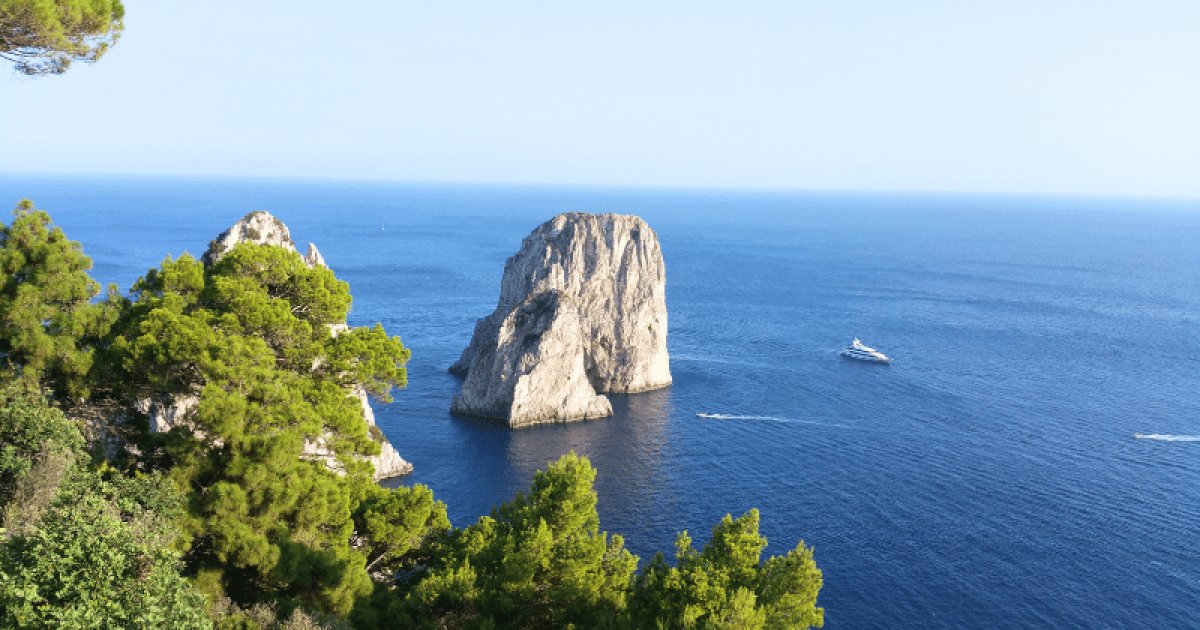CAPRI, Presentation
 Language: English / USA
Language: English / USA
Hi, my name’s Marcy, and I’m your personal guide. Along with MyWoWo, I’d like to welcome you to one of the Wonders of the World: Capri.
A boat trip is definitely the best way to fully appreciate Capri, one of the most enchanting and renowned islands in the Mediterranean. Visible from the sea are elements such as: the imposing Punta Carena lighthouse from 1867; the Torre della Guardia, or Watchtower; the remains of forts built by the British in the early 1800s, and the world-famous Faraglioni, spectacular rock formations that rise up out of the water.
A boat is the only way to visit the magnificent Blue Grotto, an unmissable natural spectacle.
In any case, I recommend that you get yourself a pair of comfortable shoes and set out to discover this wonderful island.
As I expect you know, one of the symbols of social life here is the lively Piazzetta, officially Piazza Umberto I, where locals and visitors mingle in a cosmopolitan atmosphere. But what else is there to see on Capri?
First, let's delve a little into the history of this ten-square-kilometer limestone rock that nature and the skillful work of man have turned into such a marvel.
The island was first inhabited by Greeks in the 8th century BC, and later became a popular resort under the Roman Empire. The Emperor Augustus and his successor Tiberius were particularly fond of Capri; the latter even built a dozen spectacular villas here, including the famous Villa Jovis, where he came to live while continuing to rule the empire.
Speaking of villas, not far from the remains of the grand villa of Tiberius, the splendid early 20th-century Villa Lisis has a fascinating history.
Besides the center of Capri, I recommend you take the convenient chairlift up Monte Solaro, the best vantage point, and visit Anacapri.
In the next few files, I’ll be telling you more about the main points of interest on the island.
Enjoy exploring!
An interesting fact: Historians believe that the name of the island may be derived from the Greek word "kapros," meaning boar, or from the Latin "caprae," meaning goats. Since both species were common on Capri in ancient times, there is no certain answer.



